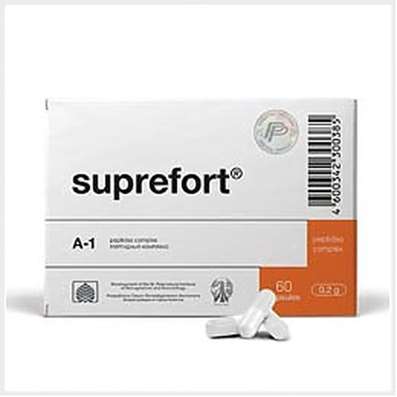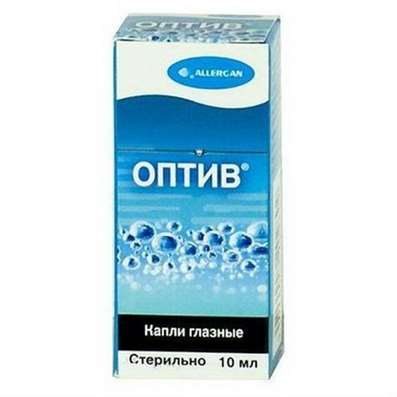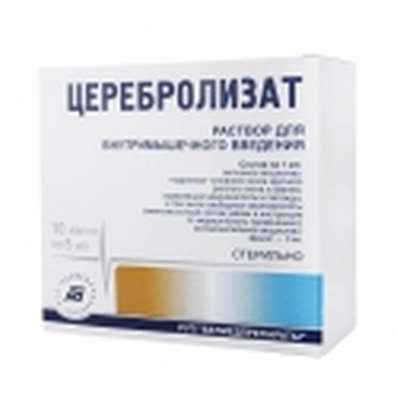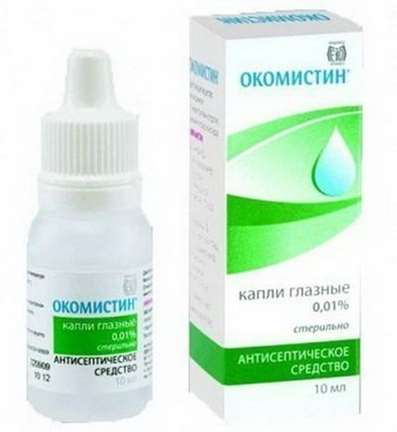Instruction for use: Nitrogenium oxydulatum
I want this, give me price
Dosage form: gas medical compressed balloon
Active substance: Dinitrogen oxide
ATX
N01AX13 Dinitrogen oxide
Pharmacological group:
Anesthetic means
The nosological classification (ICD-10)
R52.9 Unspecified pain: Pain after cholecystectomy; Pain shooting; Non-malignant pain syndrome; Obstetric and gynecological pain; Pain syndrome; Pain syndrome in the postoperative period; Pain syndrome in the postoperative period after orthopedic operations; Painful syndrome of inflammatory genesis; Pain syndrome of non-oncological genesis; Pain syndrome after diagnostic procedures; Pain syndrome after the diagnostic intervention; Pain syndrome after operations; Pain syndrome after surgery; Pain syndrome after orthopedic surgery; Pain syndrome after trauma; Pain syndrome after removal of hemorrhoids; Pain syndrome after surgery; Pain syndrome with inflammation of non-rheumatic nature; Pain syndrome with inflammatory lesions of the peripheral nervous system; Pain syndrome in diabetic neuropathy; Pain syndrome in acute inflammatory diseases of the musculoskeletal system; Pain syndrome in the pathology of tendons; Pain syndrome with smooth muscle spasms; Pain syndrome with smooth muscle spasms (renal and biliary colic, intestinal spasm, dysmenorrhea); Pain syndrome with spasms of smooth muscles of internal organs; Pain syndrome with spasms of smooth muscles of internal organs (renal and biliary colic, intestinal spasm, dysmenorrhea); Pain syndrome with injuries; Pain syndrome with injuries and after surgical interventions; Pain syndrome in chronic inflammatory diseases of the musculoskeletal system; Pain syndrome with duodenal ulcer; Pain syndrome with peptic ulcer disease; Pain syndrome with peptic ulcer of stomach and duodenum; Painful sensations; Pain during menstruation; Pain syndromes; Painful conditions; Painful leg fatigue; Gum pain when wearing dentures; The pain of exit points of cranial nerves; Painful irregular menstruation; Painful dressings; Painful muscular spasm; Painful growth of teeth; Pain; Pain in lower limbs; Pain in the area of the operating wound; Pain in the postoperative period; Pain in the body; Pain after diagnostic interventions; Pain after orthopedic surgery; Pain after surgery; Pain in the flu; Pain in diabetic polyneuropathy; Pain in burns; Pain in intercourse; Pain during diagnostic procedures; Pain during therapeutic procedures; Pain for colds; Pain with sinusitis; Pain in case of injury; Pain of a traumatic nature; Pain in the postoperative period; Pain after Diagnostic Interventions; Pain after sclerosing therapy; Pain after surgery; Postoperative pain; Postoperative and post-traumatic pain; Post-traumatic pain; Pain when swallowing; Pain in infectious inflammatory diseases of the upper respiratory tract; Pain with burns; Pain with traumatic muscle damage; Pain in case of injury; Pain when extracting a tooth; Pain of traumatic origin; Pain caused by spasm of smooth muscles; Severe pain syndrome; Severe pain syndrome of traumatic origin; Postoperative pain; Postoperative pain syndrome; Post-traumatic pain; Post-traumatic pain syndrome; Torpid pain syndrome; Traumatic pain; Moderate pain; Moderately expressed pain syndrome; Moderate pain syndrome; Polyartralgia in polymyositis
Z100.0 * Anesthesiology and premedication: Abdominal surgery; Adenomectomy; Amputation; Angioplasty of the coronary arteries; Carotid artery angioplasty; Antiseptic treatment of skin in wounds; Antiseptic treatment of hands; Appendectomy; Atheroctomy; Balloon coronary angioplasty; Vaginal hysterectomy; Venous bypass; Interventions on the vagina and cervix; Interventions on the bladder; Interference in the oral cavity; Reconstructive-reconstructive operations; Hand hygiene of medical personnel; Gynecological Surgery; Gynecological interventions; Gynecological operations; Hypovolemic shock during surgery; Disinfection of purulent wounds; Disinfection of the edges of wounds; Diagnostic Interventions; Diagnostic procedures; Diathermocoagulation of the cervix; Long-term surgeries; Replacement of fistulous catheters; Infection in orthopedic surgical interventions; Artificial heart valve; Kistectomy; Short-term outpatient surgery; Short-term operations; Short-term surgical procedures; Cryotyreotomy; Blood loss during surgical interventions; Bleeding during surgery and in the postoperative period; Laser coagulation Laserocoagulation; Laser retinopathy of the retina; Laparoscopy; Laparoscopy in gynecology; Likvornaya fistula; Small gynecological operations; Small surgical interventions; Mastectomy and subsequent plastic surgery; Mediastinotomy; Microsurgical operations on the ear; Mukinging operations; Suturing; Minor surgery; Neurosurgical operation; Eclipse of the eyeball in ophthalmic surgery; Orchiectomy; Pancreatectomy; Pericardectomy; The rehabilitation period after surgical operations; Reconvalence after surgical intervention; Percutaneous transluminal coronary angioplasty; Pleural Thoracocentesis; Pneumonia postoperative and post traumatic; Preparing for surgical procedures; Preparing for a surgical operation; Preparation of the surgeon's arms before surgery; Preparation of the colon for surgical interventions; Postoperative aspiration pneumonia in neurosurgical and thoracic operations; Postoperative nausea; Postoperative hemorrhage; Postoperative granuloma; Postoperative shock; Early postoperative period; Myocardial revascularization; Resection of the apex of the tooth root; Resection of the stomach; Bowel resection; Resection of the uterus; Liver resection; Small bowel resection; Resection of a part of the stomach; Reocclusion of the operated vessel; Gluing of tissues during surgical interventions; Suture removal; Condition after eye surgery; Condition after surgery in the nasal cavity; Condition after gastrectomy; Condition after resection of the small intestine; Condition after tonsillectomy; Condition after removal of duodenum; Condition after phlebectomy; Vascular Surgery; Splenectomy; Sterilization of surgical instrument; Sterilization of surgical instruments; Sternotomy; Dental surgery; Dental intervention on periodontal tissues; Strumectomy; Tonsillectomy; Thoracic surgery; Total gastrectomy; Transdermal intravascular coronary angioplasty; Transurethral resection; Turbinectomy; Removal of a tooth; Cataract removal; Removing Cysts; Removal of tonsils; Removal of myoma; Removal of mobile milk teeth; Removal of polyps; Removal of a broken tooth; Removal of the uterus; Removal of seams; Urethrotomy; Fistula of the luminal ducts; Frontoetmoidogamotomy; Surgical infection; Surgical treatment of chronic ulcers of extremities; Surgery; Surgery in the anus; Surgery on the large intestine; Surgical practice; Surgical procedure; Surgical interventions; Surgical interventions on the digestive tract; Surgical interventions on the urinary tract; Surgical interventions on the urinary system; Surgical interventions on the genitourinary system; Surgical intervention on the heart; Surgical procedures; Surgical operations; Surgical operations on veins; Surgical intervention; Vascular Surgery; Surgical treatment of thromboses; Cholecystectomy; Partial resection of the stomach; Extraperitoneal hysterectomy; Percutaneous transluminal coronary angioplasty; Percutaneous transluminal angioplasty; Coronary artery bypass grafting; Extirpation of the tooth; Extirpation of infant teeth; Extirpation of pulp; Extracorporeal circulation; Extraction of the tooth; Extraction of teeth; Extraction of cataracts; Electrocoagulation; Endourological interventions; Episiotomy; Ethmoidotomy; Complications after tooth extraction
Composition
Gas compressed 1 cylinder
active substance:
dinitrogen oxide 6.2 kg
Description of dosage form
A colorless gas with a weak specific odor or odorless. Does not ignite. Supports combustion.
Pharmacodynamics
Means for inhalation anesthesia. Nonspecifically interacting with the membranes of neurons, inhibits the transmission of nerve impulses in the central nervous system, changes the cortical-subcortical relationships. Has a high analgesic activity. Small concentrations cause a feeling of intoxication and mild drowsiness. The analgesia stage is achieved within 2-3 min with the content of up to 80% nitrous oxide and 20% oxygen in the gas mixture. After 6-8 minutes after a short, but quite pronounced stage of excitation, there comes the first stage of surgical anesthesia. General anesthesia is maintained with an oxide dinitrogen concentration of 40-50% with a corresponding increase in oxygen supply. A sufficient relaxation of the skeletal muscles is not achieved. Therefore, nitrous oxide is combined with other means for inhalation anesthesia and muscle relaxants to achieve the desired effect. Awakening occurs 3-5 minutes after the gas supply stops. Increases heart rate, causes narrowing of peripheral vessels, can increase ICP, depress respiration.
Pharmacokinetics
Through the lungs enters the systemic circulation. It is not metabolized, is in a dissolved state in the plasma. It is completely unchanged through the lungs in 10-15 minutes, a small amount - through the skin, T1 / 2 - 5-6 minutes, permeability through the BBB and the placental barrier is high.
Indication of the preparation Nitrogenium oxydulatum
Combined inhalation anesthesia (using special equipment) in combination with other anesthetics, muscle relaxants and narcotic analgesics;
general anesthesia, which does not require deep anesthesia and muscle relaxation (in general surgery, operative gynecology, dentistry, for pain anesthesia);
strengthening the anesthetic and analgesic effect of other anesthetics (including therapeutic analgesic anesthesia in the postoperative period), traumatic shock (prevention);
pain syndrome: acute coronary insufficiency, myocardial infarction, acute pancreatitis (cupping);
anesthesia in the performance of medical procedures requiring disconnection of consciousness.
Contraindications
hypersensitivity;
hypoxia;
diseases of the nervous system;
chronic alcoholism, the state of alcoholic intoxication (possibly the emergence of excitement and hallucinations).
With caution: craniocerebral injury, increased intracranial pressure in the anamnesis, intracranial tumors.
Application in pregnancy and lactation
Nitrous oxide is used as an inhalation for the anesthetization of labor. Prolonged use can provoke miscarriages or adversely affect the development of the child. However, if necessary, the agent is prescribed in low concentrations (ratio to oxygen content 1: 1) and for short-term use (for 2-3 breaths).
Contraindicated during lactation, therefore, if necessary, breastfeeding should be abolished.
Side effects
During the introduction of anesthesia, supraventricular arrhythmias, bradycardia, circulatory failure.
After leaving the general anesthesia - diffuse hypoxia, postnarcosis delirium (a sense of anxiety, confusion, excitement, hallucinations, nervousness, motor excitement).
Nausea, vomiting, drowsiness; with prolonged use (more than 2 days) - respiratory depression, bone marrow dysfunction, manifested by leukopenia, pancytopenia, as well as hyperthermic crisis and postoperative chills.
Interaction
Means for inhalation anesthesia, narcotic analgesics, tranquilizers, neuroleptics, antihistamines increase the effect.
Amiodarone increases the risk of bradycardia (not atropine-stopable) and arterial hypotension, xanthine - arrhythmia.
Fentanyl and its derivatives increase the effect on CAS (decrease in heart rate and minute heart volume).
Strengthens the effects of antihypertensive drugs - diazoxide, ganglion blockers, diuretics, as well as anticoagulant drugs (coumarin and indanedione derivatives) and respiratory depression and CNS.
Dosing and Administration
Inhalation.
Nitrous oxide is used in a mixture with oxygen and other means for inhalation anesthesia with the help of special devices for gas anesthesia.
Usually start with a mixture containing 70-80% of the dinitrogen oxide and 20-30% oxygen.
For relief and prevention of pain syndrome, medical anesthesia is carried out at a concentration of dinitrogen oxide 40-75%.
To quickly achieve the required depth of general anesthesia (anesthesia), the concentration of dinitrogen oxide is 70-75%, maintenance of general anesthesia - 40-50%; if necessary, add more powerful drugs (barbiturates, fluorotane, ether). After stopping the supply of dinitrogen oxide, you should continue to supply oxygen for 4-5 minutes (to avoid diffusion hypoxia).
For analgesia of childbirth use the method of intermittent autoanalgesia using a mixture of dinitrogen oxide (40-75%) and oxygen: the mother gives birth to inhaling the mixture at the appearance of harbingers of the fight and ends the inhalation at the height of the bout or to its end.
To perform medical procedures that require disconnection of consciousness, inhalation of 25-50% of the mixture with oxygen.
For children, doses are selected individually. Inhalation of the mixture can be at an oxygen content of at least 30%, and after stopping inhalation, it is necessary to continue supplying oxygen for 5 minutes (prevention of hypoxia).
To reduce emotional excitement, prevent nausea and vomiting, and potentiate the effect, a premedication is shown: IM injection of 1-2 ml of a 0.5% solution of diazepam (5-10 mg), 2-3 ml of 0.25% solution of droperidol (5- 7.5 mg).
Overdose
Symptoms: bradycardia, arrhythmias, decreased blood pressure, respiratory depression, delirium, acute hypoxia.
Treatment: with bradycardia - the introduction of 0.3-0.6 mg of atropine, with arrhythmia - correction of the content of gases in the blood, with circulatory insufficiency and arterial hypotension - the introduction of plasma or plasma substitutes, a decrease in depth or discontinuation of general anesthesia, with hyperthermic crisis - inhalation, increased oxygen supply, administration of antipyretics, correction of water-salt balance and metabolic acidosis, if necessary - dantrolene (1 mg / kg) IV drip until the symptoms of the crisis disappear (maximal I total dose - 10 mg / kg). To prevent recurrence of the crisis for 1-3 days after the operation, dantrolen is administered orally or IV (4-8 mg / kg / day in 4 separate doses). Inhibition of respiration or inadequate postoperative ventilation of the lungs necessitates a reduction in the dose of anesthetic (if it is still used), airway patency and ventilation. In the case of delirium development, after the withdrawal from general anesthesia, small doses of the narcotic analgesic are administered.
Special instructions
It is necessary to monitor blood pressure, heart rate, heart rate, monitor breathing and gas exchange, body temperature. Medical staff with prolonged contact increases the risk of developing leukopenia. During use, periodic pumping of gas from the cuff of the endotracheal tube is recommended.
Mixtures with ether, cyclopropane, chloroethyl at certain concentrations are explosive.
Patients with chronic alcoholism require high concentrations.
Children. Nitrous oxide is used in children. Possible use in infants. Doses are selected individually. For newborns Nitrous do not use nitrous oxide.
Influence on the reaction rate when driving vehicles or working with other mechanisms. Nitrous oxide acts primarily on the central nervous system, the drug is used as a means for inhalation anesthesia, and therefore do not apply when driving vehicles or working with other mechanisms.
Release form
The gas is compressed. At 6.2 kg in metal containers with a capacity of 10 liters.
Conditions of leave from pharmacies
At the request of medical institutions.
Conditions for storing Nitrogenium oxydulatum
At a temperature of no higher than 25 ° C.
Keep out of the reach of children.
Shelf life of Nitrogenium oxydulatum
5 years.
Do not use after the expiry date printed on the package.

 Cart
Cart





